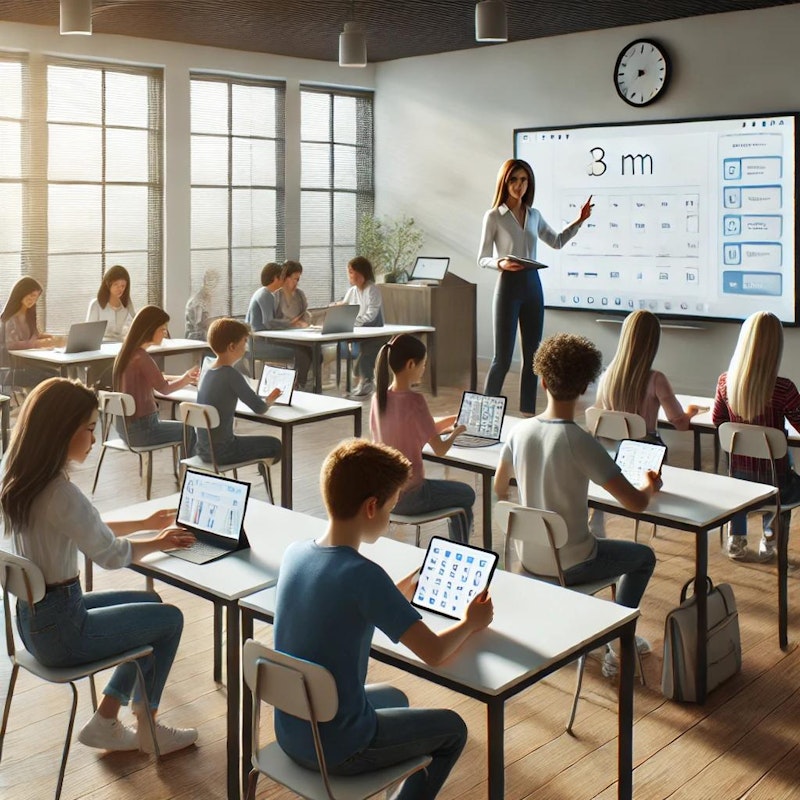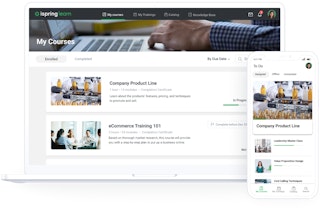The impact of digital screens on education: learning from childhood to university
In today's fast-changing world, technology has woven itself into the fabric of education, reshaping how students absorb information and connect with their teachers and peers. Whether it's tablets, laptops, interactive whiteboards, or online learning platforms, digital tools are making a lasting impact on the learning experience. While some worry about excessive screen time, when used thoughtfully, EdTech offers far more benefits than drawbacks (Ahmad & Jaradat, 2023).
Today’s students are naturally inclined toward technology, having grown up in a world where digital tools are part of everyday life. With emerging technologies and evolving digital spaces becoming the norm, education must adapt to provide students with the skills they need to thrive in this ever-changing environment (Shustova, Polevaya, & Ivanov, 2023).
The Benefits of Digital Screens in Education
1. Tailored Learning Journeys
One of the biggest advantages of digital learning tools is their ability to customize lessons based on individual progress. Adaptive platforms assess students’ understanding and adjust the content accordingly, allowing each learner to move at their own pace. This personalized approach helps reinforce concepts and bridge knowledge gaps more effectively (Umaemah et al., 2024).
2. Boosting Engagement and Interest
Digital tools bring lessons to life in ways that traditional methods often cannot. Interactive features like gamification, videos, and virtual reality make learning more immersive and enjoyable. By turning subjects like math, science, and history into engaging experiences, students remain motivated and eager to learn (Burlacu, 2022).
3. Unlimited Access to Learning Materials
With digital screens, knowledge is always within reach. Online libraries, academic databases, and e-books remove geographical and financial barriers, ensuring that students of all backgrounds have equal opportunities to learn and grow (Nehrey, Zomchak, & Salem, 2020).
4. Enhancing Collaboration and Communication
Technology fosters teamwork by allowing students and teachers to connect effortlessly. Digital platforms enable real-time discussions, group projects, and peer feedback, even when participants are miles apart. Tools like Google Classroom, Zoom, and Microsoft Teams ensure seamless communication beyond school walls (Laufer et al., 2021).

5. Developing Critical Skills for the Future
Digital literacy is no longer optional—it’s essential. Exposure to technology helps students hone problem-solving abilities, creativity, and critical thinking, all of which are crucial for success in higher education and modern careers (Dutta, 2022).
6. A Sustainable and Cost-Effective Approach
By reducing reliance on printed materials, digital learning supports sustainability while also cutting costs for schools and families. Online assignments and e-books help conserve resources, making education more environmentally friendly (Vasylyshyna, 2020).
Navigating the Challenges
Despite its many benefits, digital learning comes with some challenges. Fortunately, these can be managed with mindful implementation:
- Balancing Screen Time: A mix of digital and traditional learning methods ensures students benefit without overexposure to screens.
- Protecting Privacy and Security: Schools must implement strong cybersecurity measures to safeguard students' personal data.
- Ensuring Equal Access: Efforts should be made to provide devices and internet access to students in underserved communities.
The Future of Learning with EdTech
Digital screens aren’t just tools—they’re powerful drivers of educational transformation. By embracing technology in the classroom, we can create a more dynamic, inclusive, and effective learning environment for students from childhood to university. As education continues to evolve, leveraging EdTech ensures that students are not only learning but thriving in a world where technology and knowledge go hand in hand. Are you ready to be part of the future of education? Let’s embrace innovation and shape a smarter, more connected generation of learners!
References
- Ahmad, H., & Jaradat, M. (2023). Educational Technology and the Future of Teaching: Preparing for the Challenges and Opportunities Ahead.
- Shustova, I., Polevaya, E., & Ivanov, A. (2023). The impact of Edtech: strengths and opportunities.
- Umaemah, A., Nainggolan, D. M., Halking, H., Habibatun, H., & Payage, N. (2024). The Effect of EdTech Integration, Inclusive Education Policies, and Continuous Professional Development on Learning Outcomes.
- Burlacu, N. (2022). EdTech: Concept And Connections.
- Vasylyshyna, N. (2020). Benefits of Digital Learning Application at Universities.
About the author
About EdTick
EdTick is a platform that helps educational institutions connect with academic software. Join our Beta program and help us shape the future of educational technologies!



